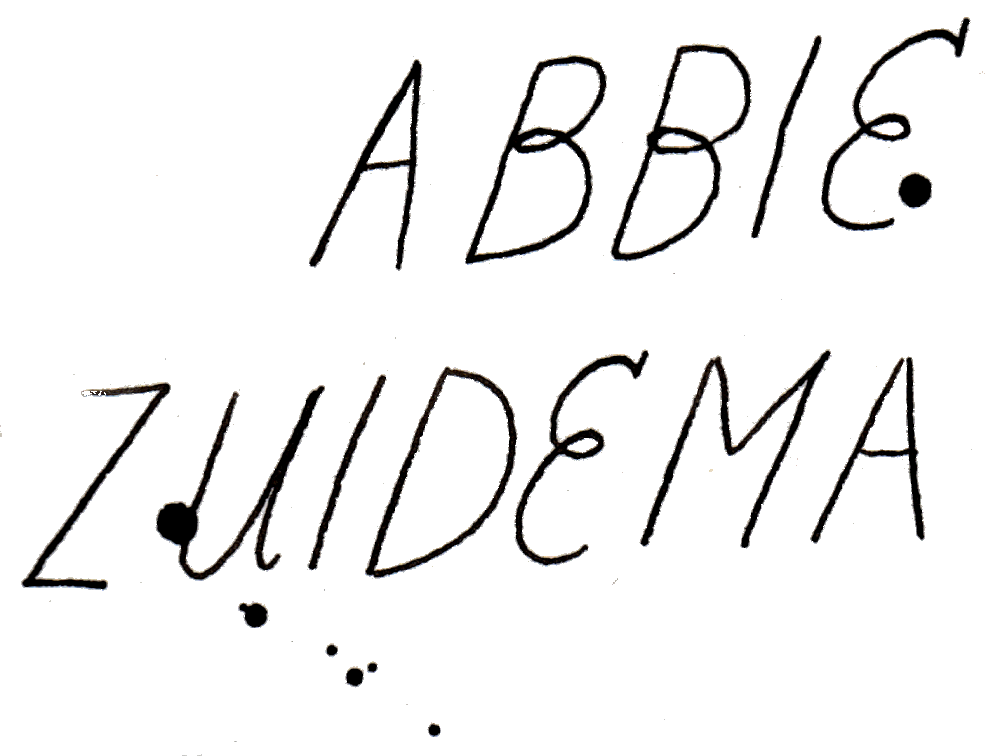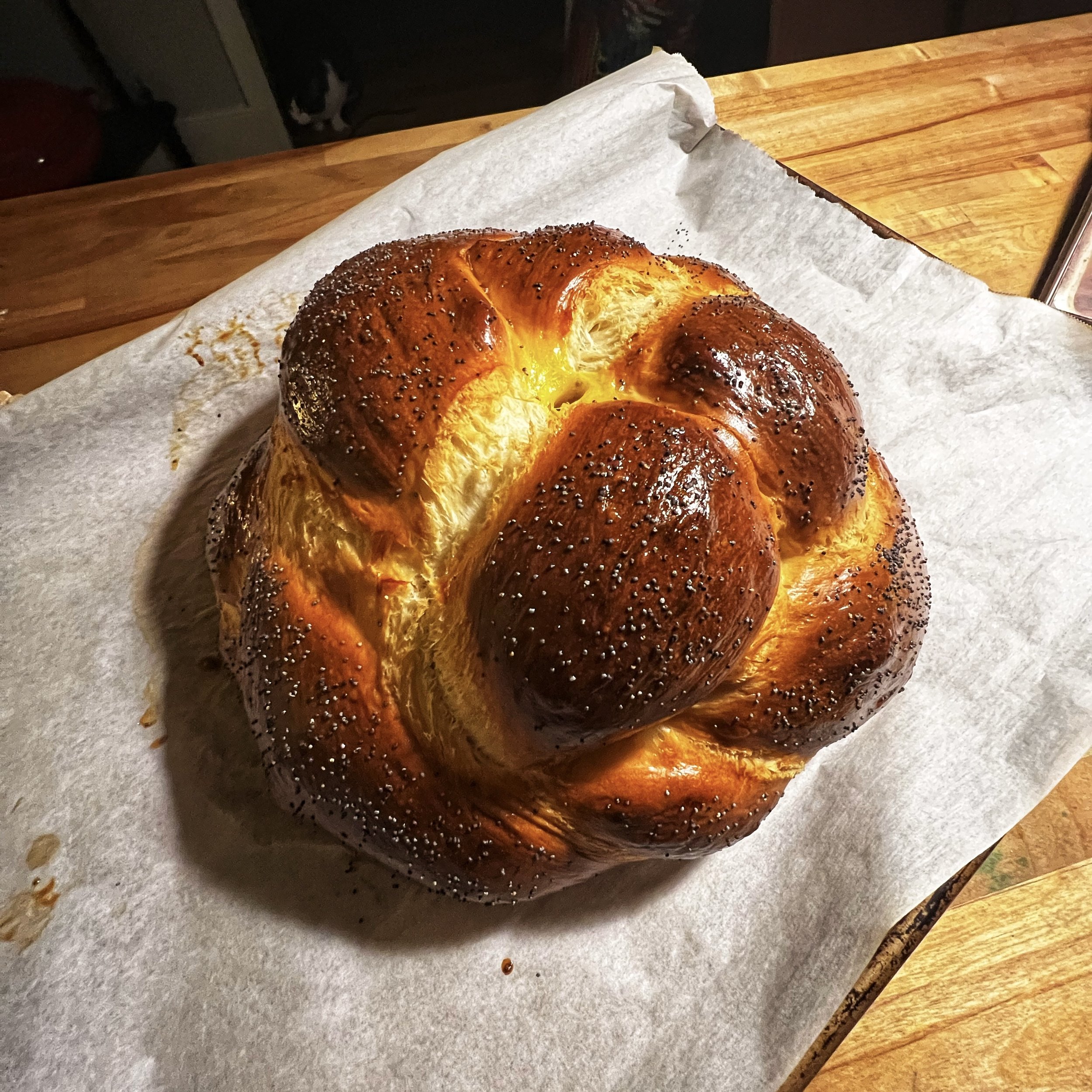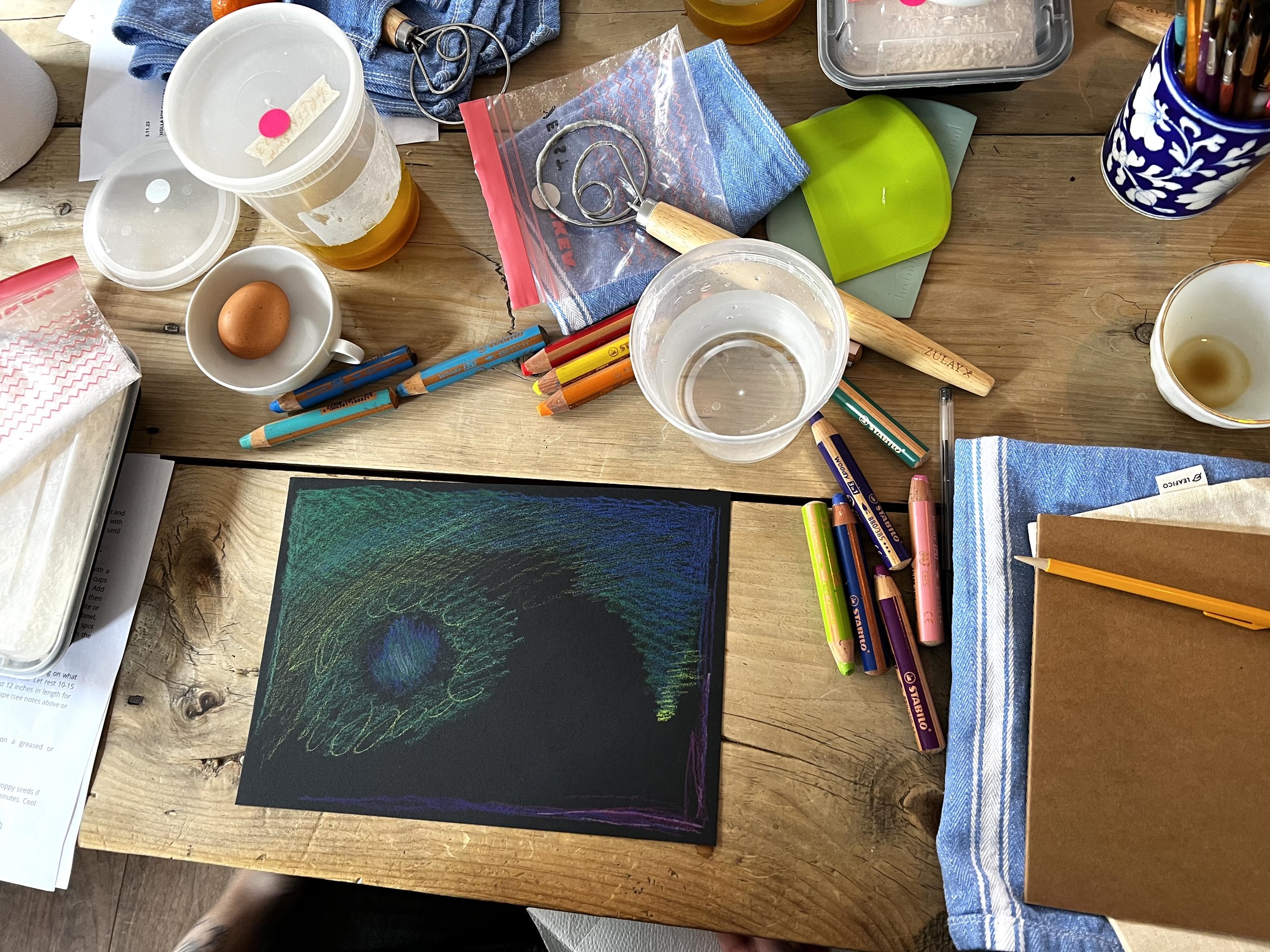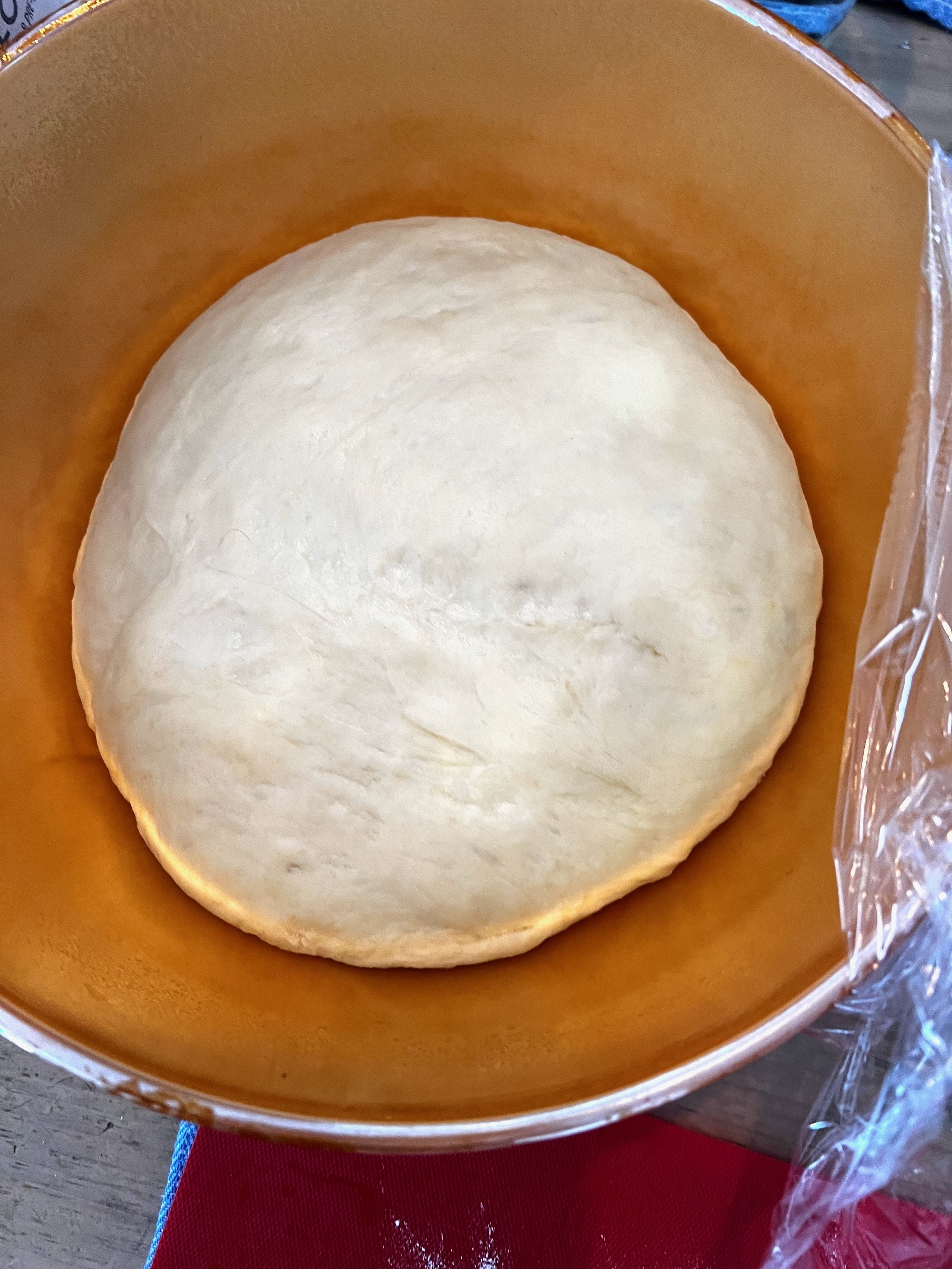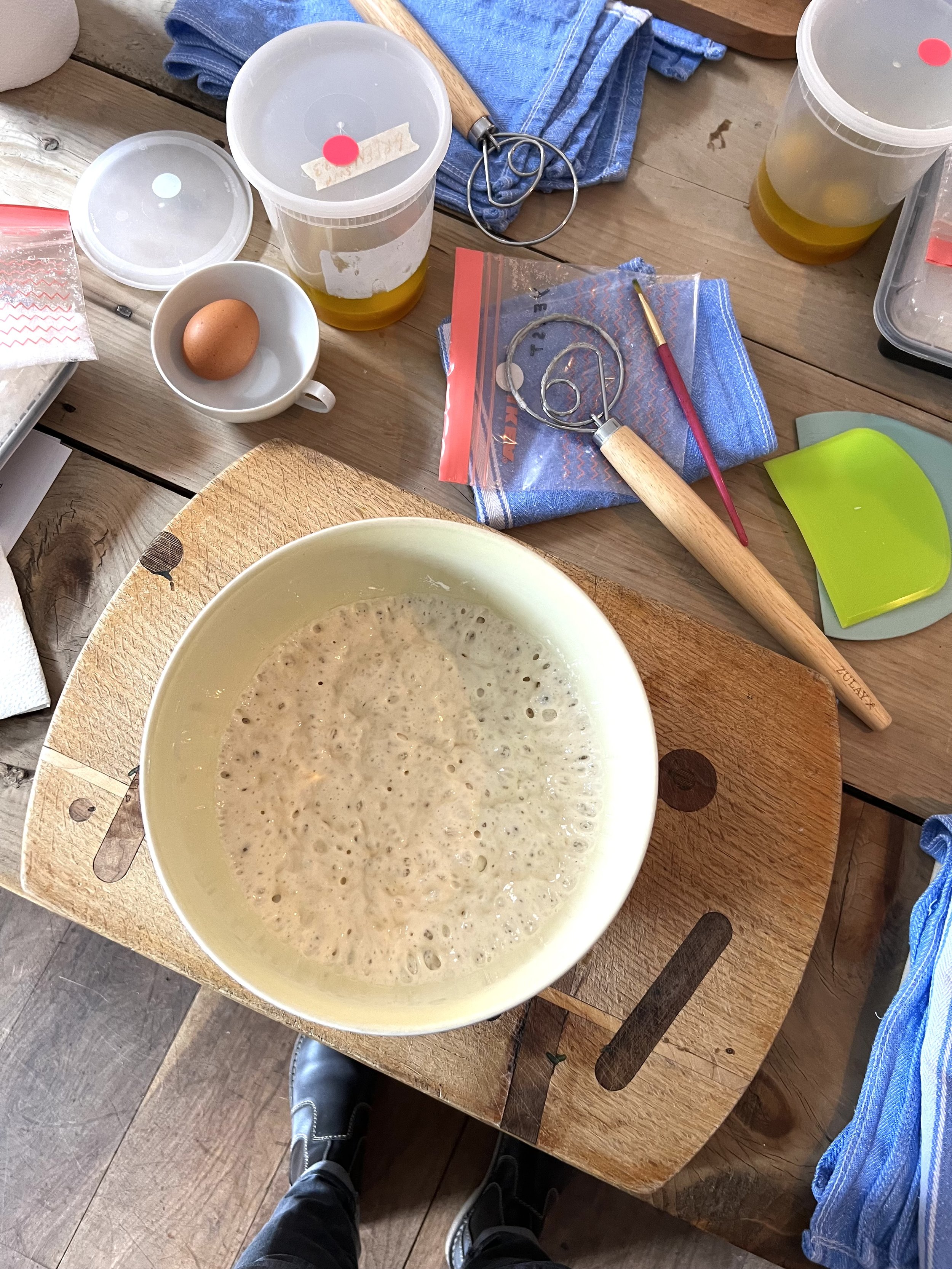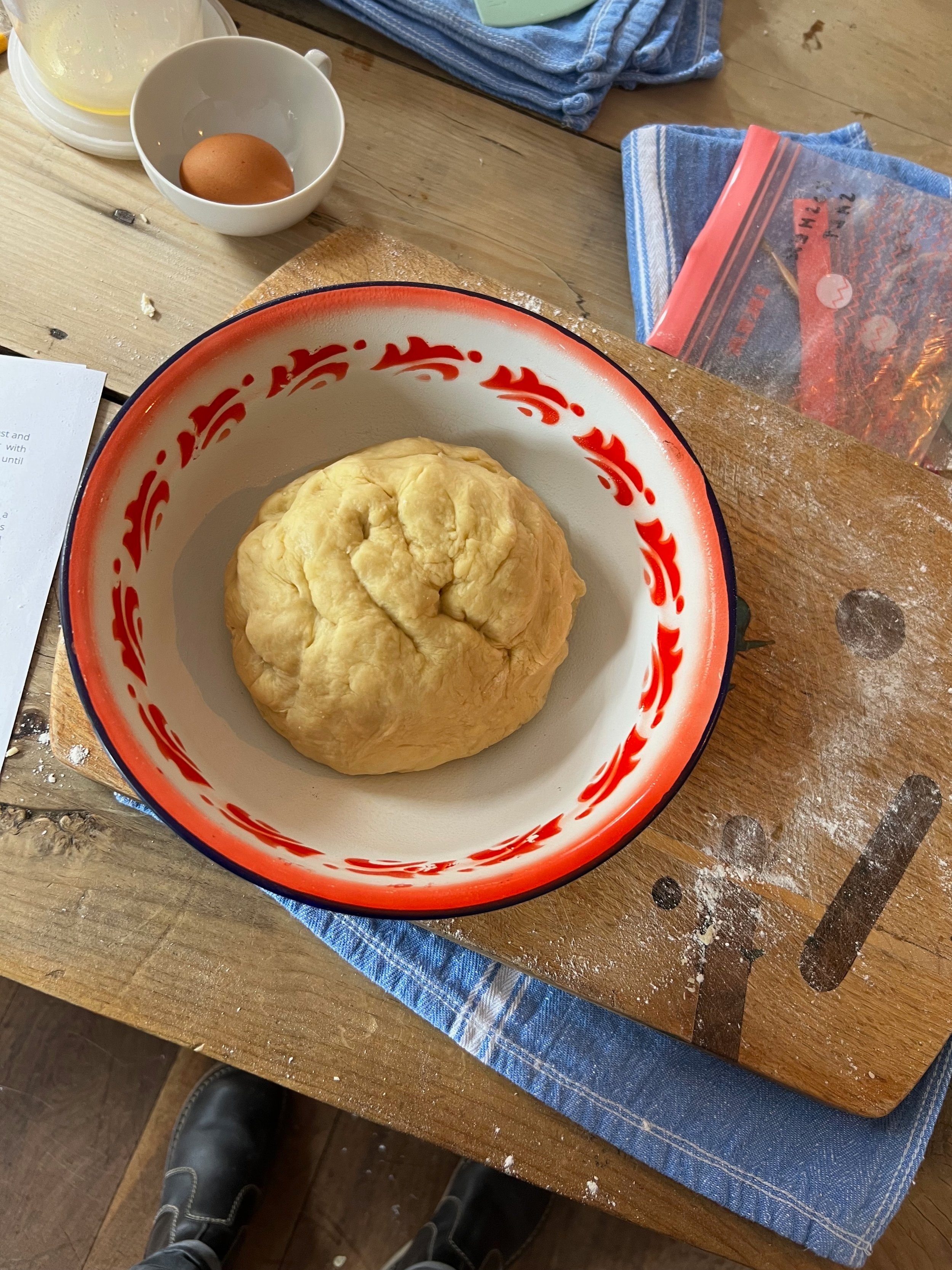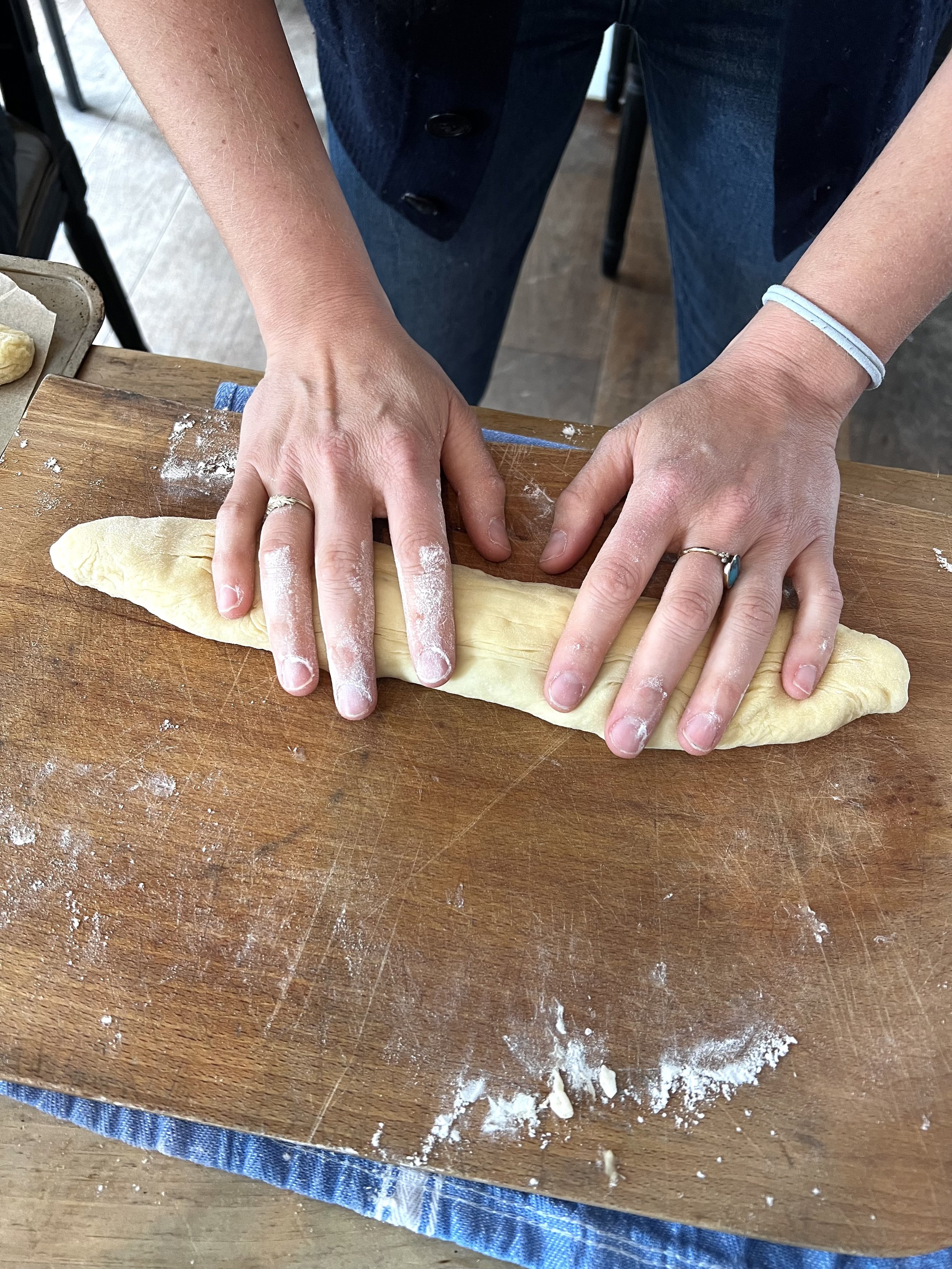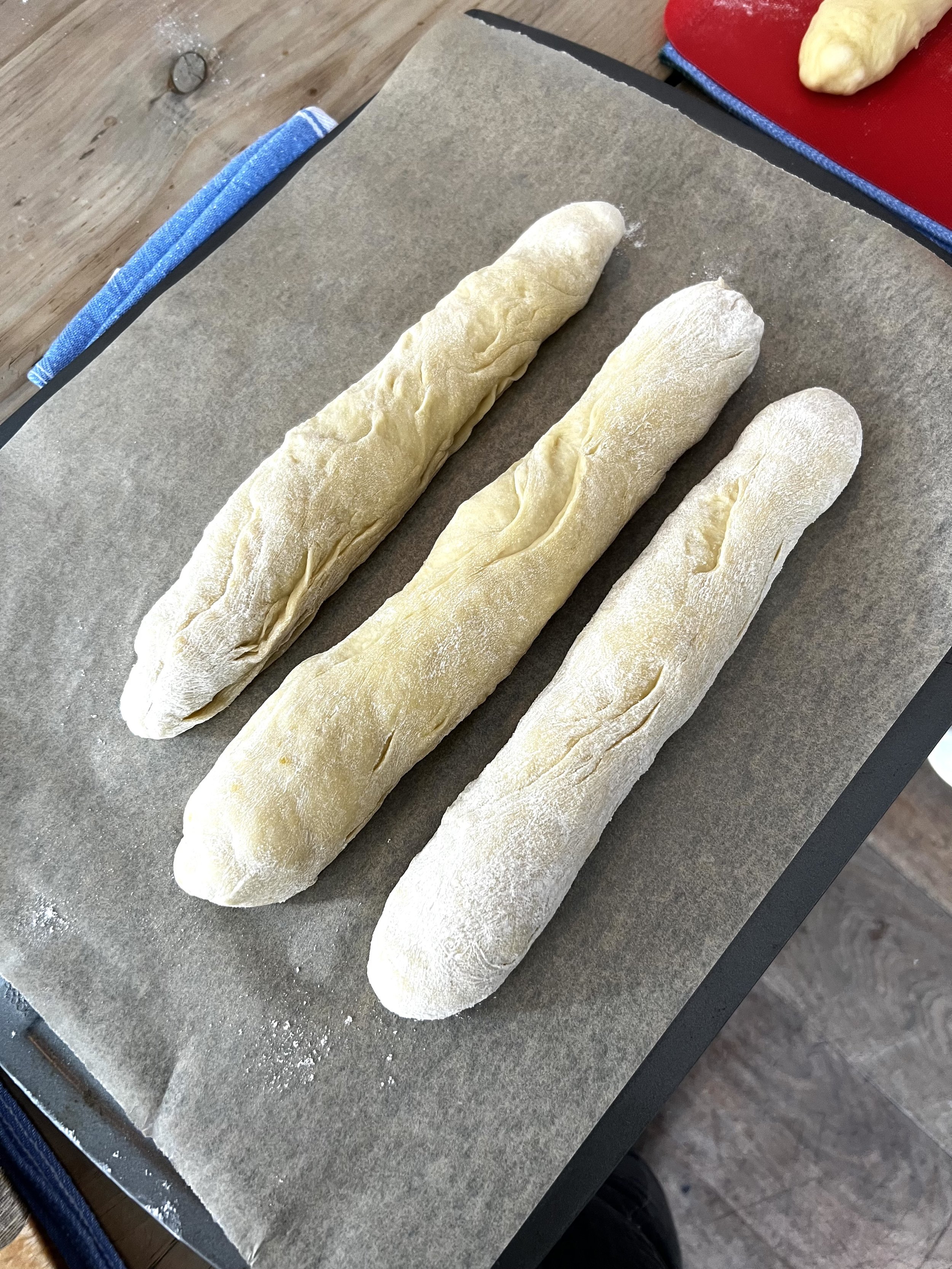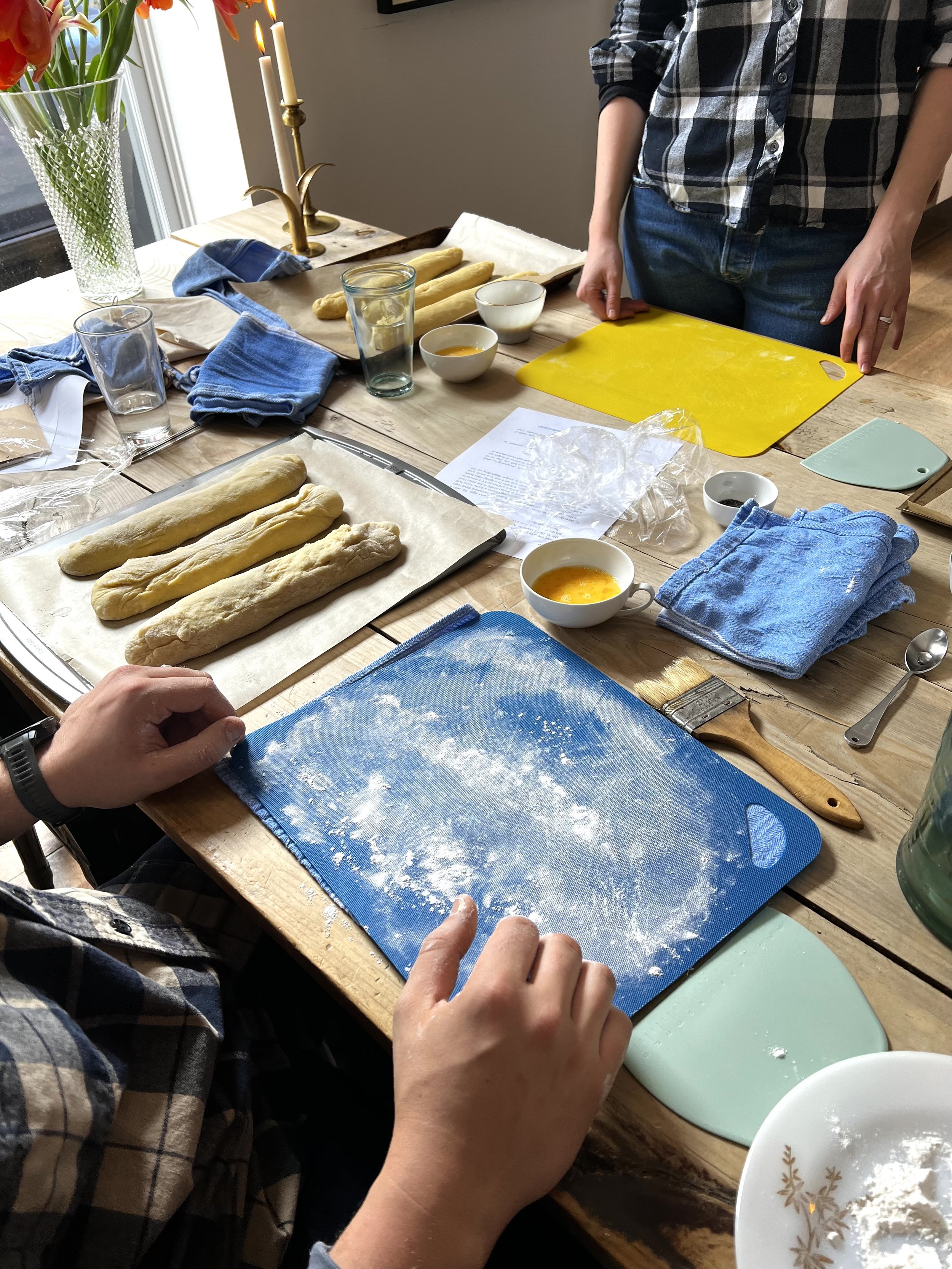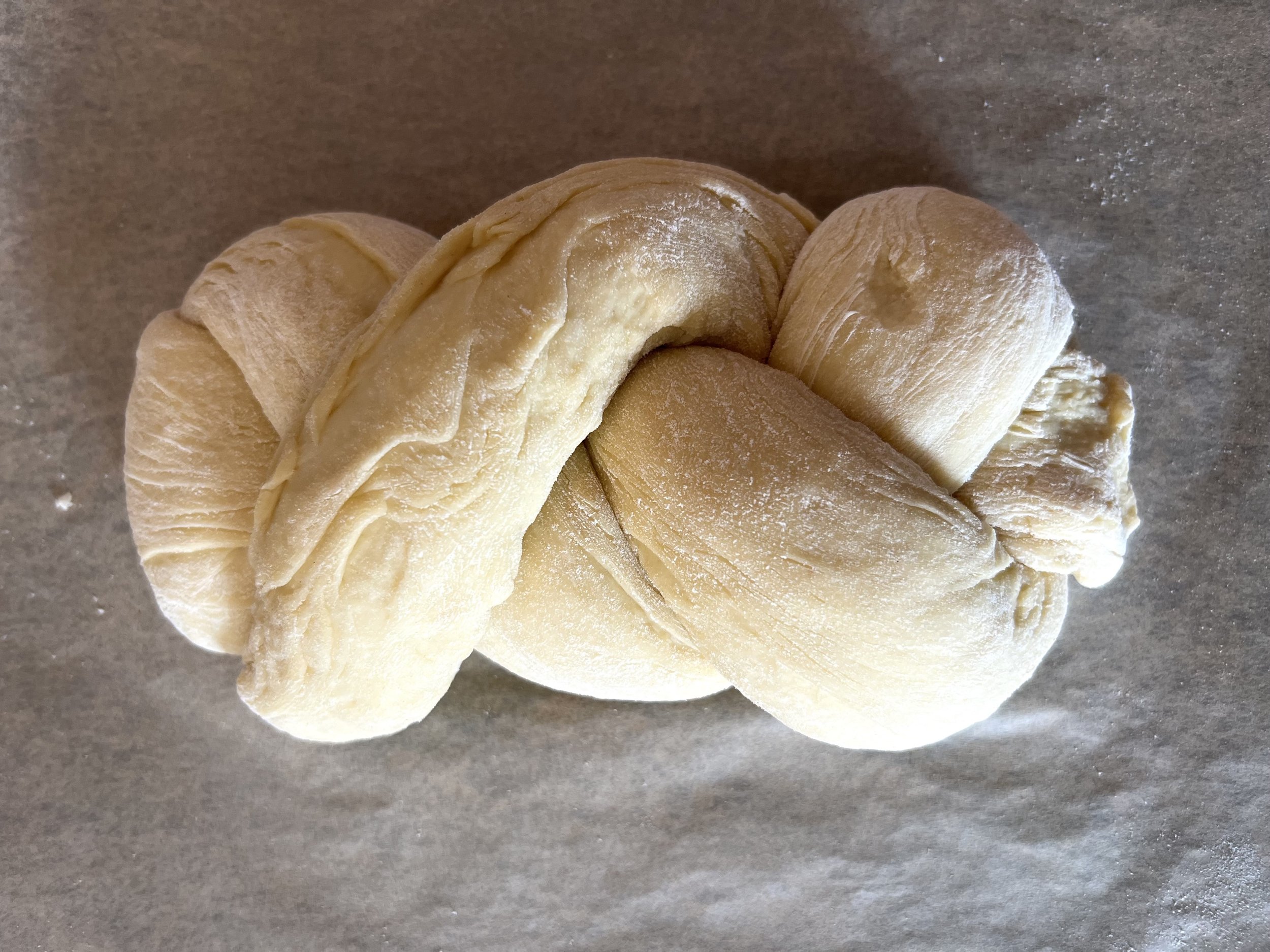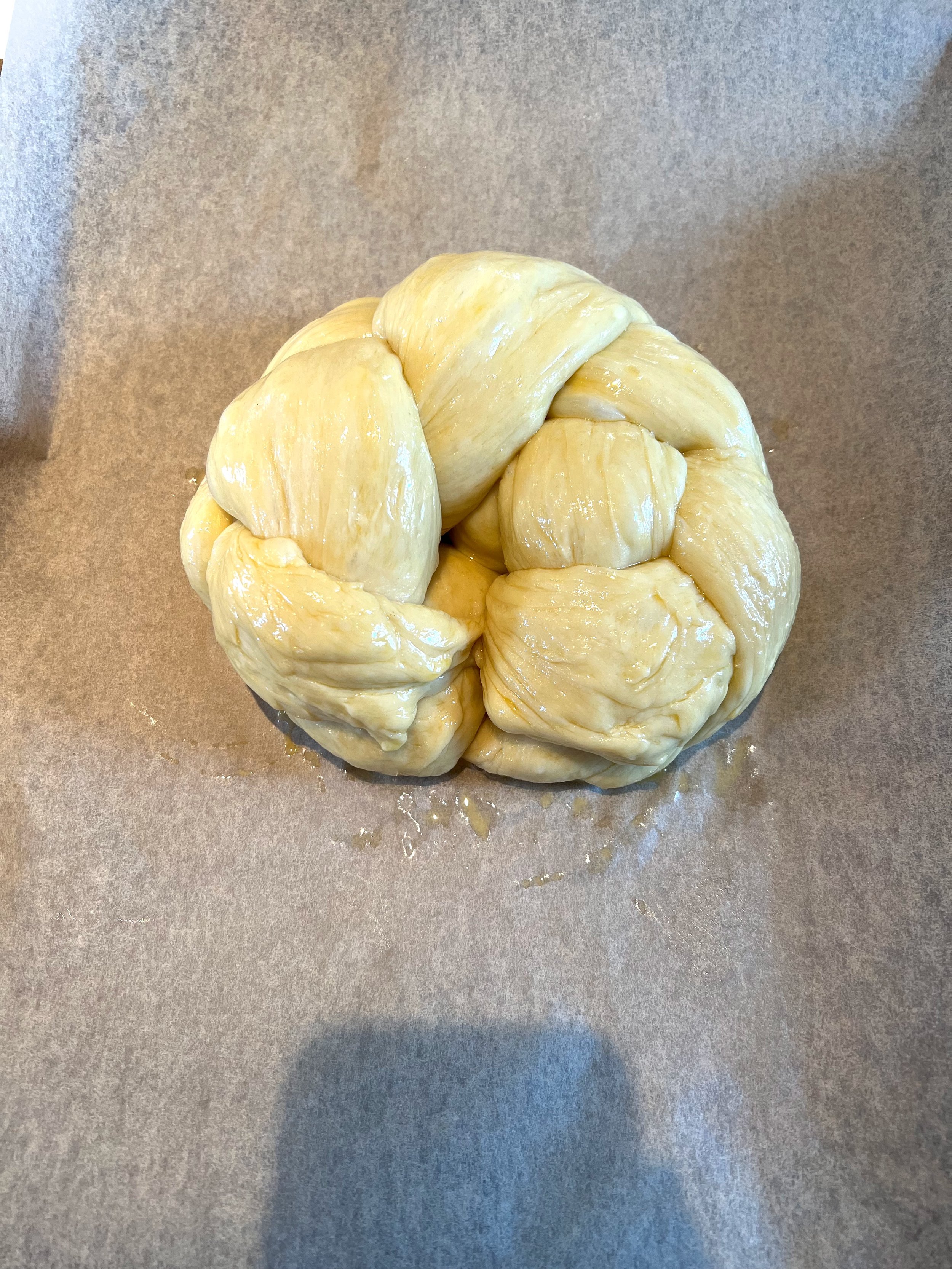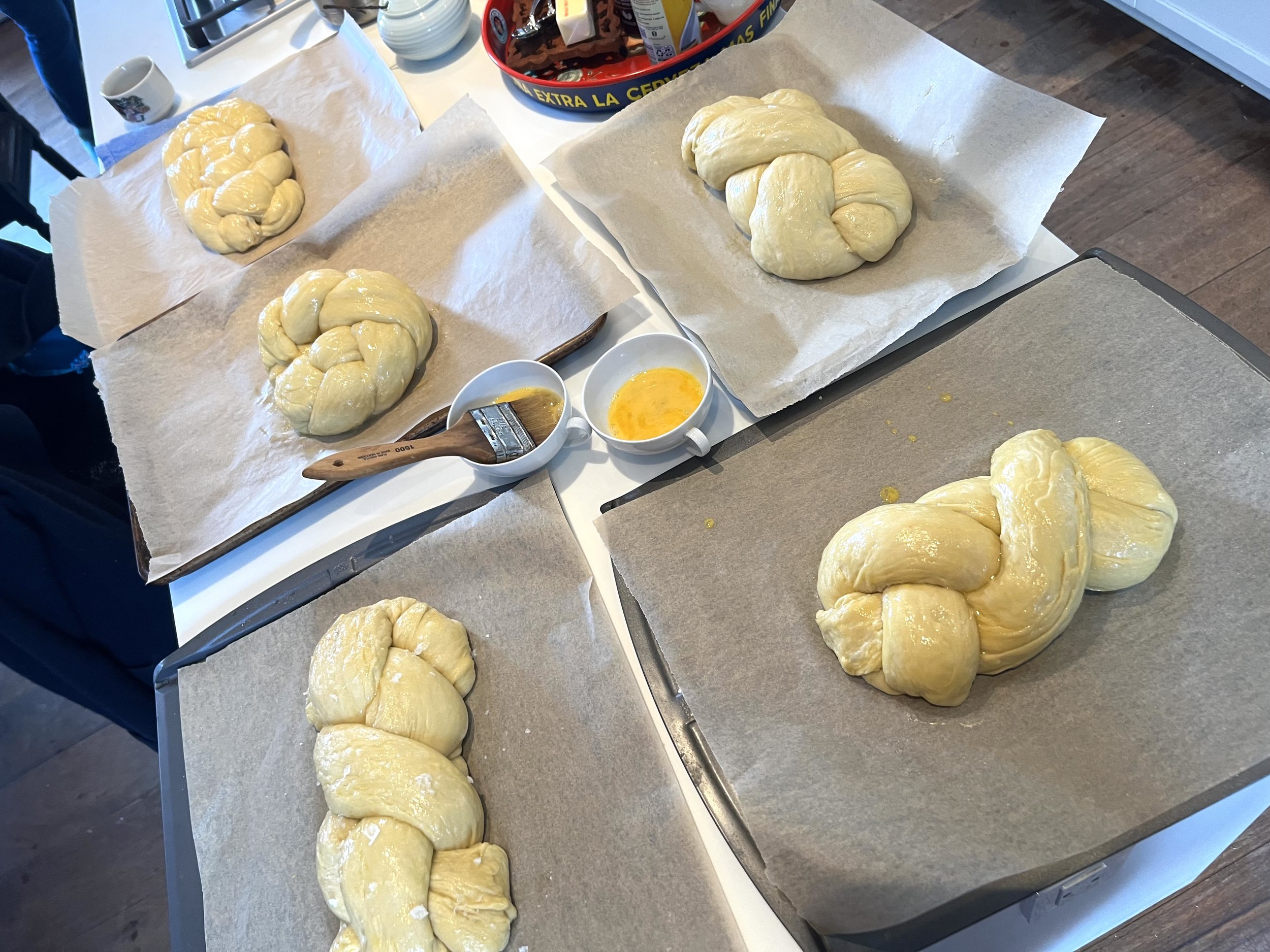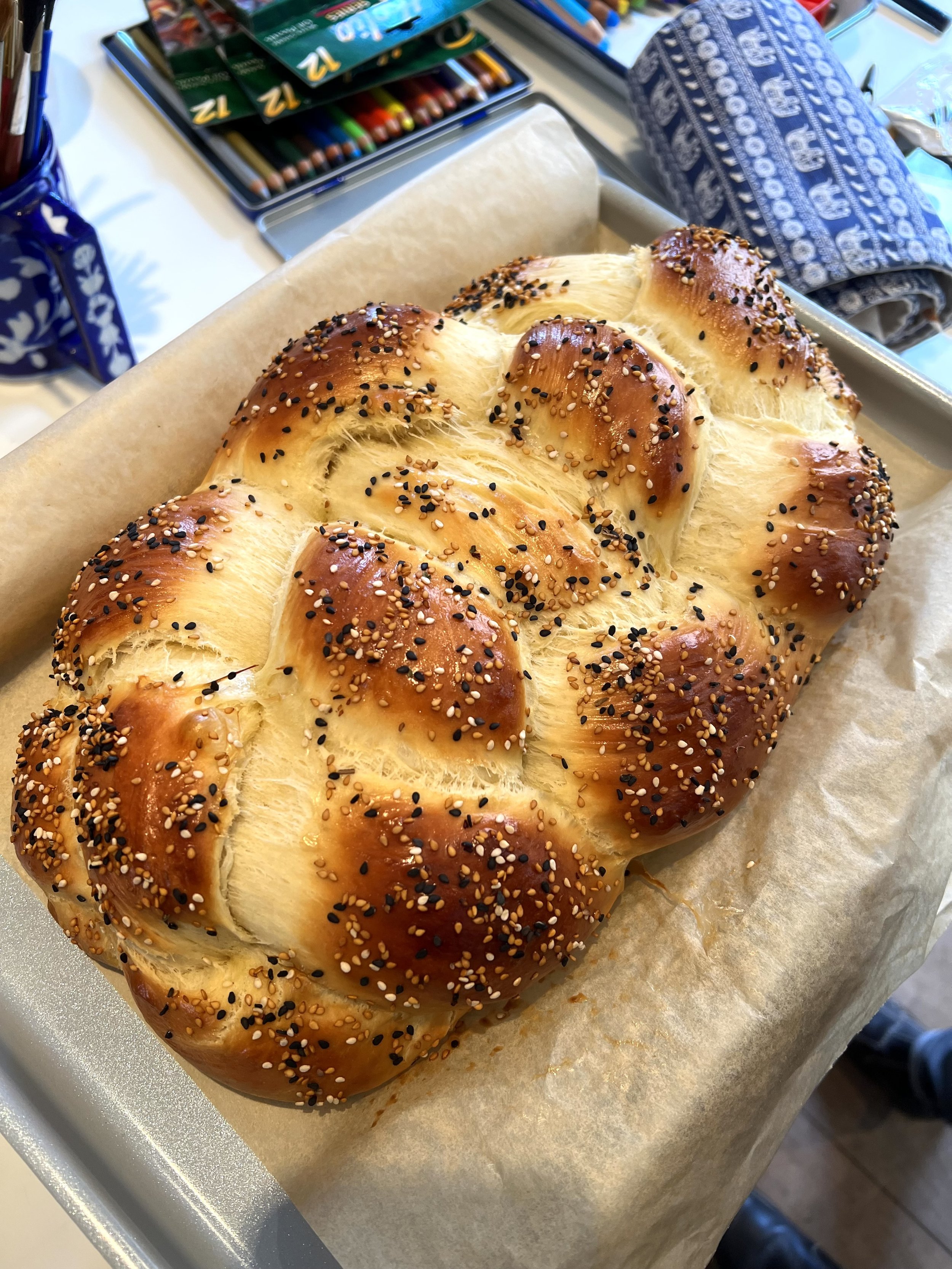This innovative study, "Haptic Healing—Hands, Brain & Bread." project is a new study that brings together people from different art and science backgrounds. It's a proposal for the Renée Fleming Neuroarts Investigator Awards, based on my thesis at Pratt Institute about "Haptic Healing: Hands & Bread."
Principle investigator/project manager/researcher: Abbie Zuidema, Arts Therapist, M.S in Creative Arts Therapy (CAT)
Principle investigator/project manager/researcher: Zoe Eisenberg, M.S in Dance Movement Therapy (R-DMT)
Senior Researcher: Julia Basso PhD, CYT, Institutional affiliation(s): Virginia Tech, NeuroArts discipline: Principal Investigator at “The Embodiment Labratory.”
Research Consultant: Madeline Rugh, Ph.D., ATR-BC
Through a unique blend of haptic engagement, EEG neuroscientific measurements, and participant surveys, our research aims to uncover the neurological and somatic benefits of bread making as a therapeutic tool. This collaborative effort combines expertise from the arts and sciences to comprehensively examine the impact on both creative arts therapy, somatic experiences, and neurological well-being.
Fig. 34
What are NeuroArts?
NeuroArts refer to the combination of neuroscience and art.
NeuroArts is a cross-disciplinary area of study examining how artistic practices measurably impact the brain and body, and behavior. Researchers aim to translate this understanding into targeted practices that contribute to enhancing health and overall well-being.
The awards aim to propel the integration of NeuroArts into mainstream health practices, fostering a holistic understanding of how the arts contribute to physical and mental well-being across the lifespan.
These grants, each up to $25,000, seek to expand the scientific evidence demonstrating the transformative power of the arts on health, supporting innovative and collaborative projects that bridge the realms of neuroscience, psychology, public health, and various art forms.
NeuroArts Proposal: "Haptic Healing—Hands, Brain & Bread."
Leadership: I provide a unique and innovative approach to NeuroArts that seamlessly merges my academic background, practical therapeutic expertise and three decades of NYC restaurant experience. My focus extends to strategic elements, including careful attention to the location, hands-on facilitation of the challah-making exercise, monitoring the duration of bread making, and the meticulous preparation of study tools.
The act of making food activates kinesthetic motor function on the Expressive Therapies Continuum (ETC), working in tandem with various art materials. In this case, Challah dough serves as an alternative to clay, offering a unique and therapeutic modality. I ensure a comprehensive, warm, and enriching therapeutic environment by emphasizing specific and defined limits within the study, paying meticulous attention to ethical considerations, and maintaining participant anonymity.
Directive: 12 people, in groups of six, will spend two days making challah bread, providing both qualitative and quantitative data for pre- and post-analysis. This mixed-method study contributes to NeuroArts, exploring the intricate connections between our senses, movements, and thinking connections during creative activities. This innovative approach has the potential of broadening accessibility, helping more people benefit from therapy through art, positioning this project as a valuable contribution to the field.
Ultimately, my goal is to distill the collective participant experience, illuminating shared overarching themes that contribute to the richness of our research.
Advancing the Field: The results of our proposed project, "Haptic Healing—Hands, Brain & Bread," is poised to significantly advance the field of NeuroArts, potentially to securing additional research support for building on the findings.
Innovation: Beyond its therapeutic applications, the study initiates broader societal discussions, prompting dialogue on critical issues like food scarcity, sourcing, local resources, farming practices, and environmental concerns.
Multidisciplinary Approach: In essence, "Haptic Healing" not only delves into the healing potential of bread making but also encourages contemplation on interconnected global challenges. This multifaceted approach contributes to the project's potential impact, making it a catalyst for advancing research in NeuroArts and sparking meaningful conversations around crucial societal issues.
Fig. 35
Early Career Opportunity: As a principal investigator of the "Haptic Healing—Hands, Brain & Bread" project, I fall under the Early Career Opportunity category, as my proposal has not yet received significant financial support. This innovative study explores the therapeutic possibilities of bread making within the realms of Creative Arts Therapy (CAT) and Dance/Movement Therapy (DMT) and Neuroscience.
It presents a novel and interdisciplinary approach, showcasing my commitment to making a meaningful impact in the field of NeuroArts using haptic learning and bread making. The project's potential to democratize therapeutic interventions and contribute to broader societal discussions positions it as a valuable opportunity for me to advance my early career and provide valuable insights to the NeuroArts community.
Thesis Poster for Pratt Institute Virtual Presentation; September 12, 2023
Our Fingertips . . .
Every square inch of skin has around 16,000 touch sensors that communicate with our brain.
No other part of our body has as many touch sensors.
